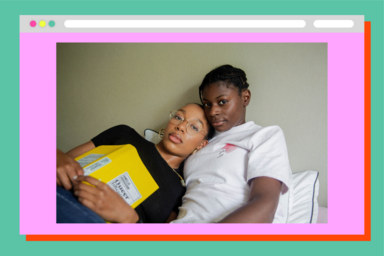On May 11, Instagram introduced a brand new feature that allows users to add their pronouns to their Instagram bio. Now, app users can specify up to four different pronouns, including “she,” “he,” “they,” “ze,” and they can submit other options by submitting a form to Instagram. The new feature was met with positive feedback, and many users noted that this feature can help alleviate the pressure for folks exclusively in the trans and nonbinary community to share their pronouns. Allies were also excited to add them in and create a safer, more accepting environment on the platform. However, it’s been nearly two months, and many users haven’t utilized the feature. Given people’s excitement, and the fact that it takes only a few seconds to complete, why aren’t people adding pronouns to their Instagram bios?
According to Instagram Software Developer Katy Shi, Instagram created this feature as part of a recent push to become more inclusive on the platform. “From the moment we launched this, we saw that people were really excited that Instagram was leaning into normalizing pronouns,” Shi tells Her Campus. “We heard that members of our community felt recognized and that they loved that this experience was now seamless. So, we’re thrilled that so many people of many identities felt like this was a useful and meaningful feature.”
Depending on the age of the Instagram user, pronouns may not be publicly displayed to protect the user’s privacy. Pronouns of users who are under 18 will be visible only to their followers, and users over 18 can opt to have their pronouns displayed publicly or to their followers exclusively. Instagram is one of the first major social media platforms to add the pronouns feature, along with Facebook, which has allowed users to select their gender identity since 2014, and LinkedIn, which recently introduced the option for users to add pronouns to their headline.
Sharing your pronouns is a personal experience.
Rebecca, 26, an alumna of Western Governors University, feels that the new feature is a perfect way to normalize asking for one’s pronouns. And although she has not added pronouns to her profile, she believes that the feature allowed for more inclusivity in general. “I think it is great,” Rebecca tells Her Campus. “It makes people feel heard, it makes people feel valued.”
For some Instagram users, like Nat, who is nonbinary and attended North Carolina State University, the ability to utilize the pronouns feature enabled them to save space in other parts of their bio. “I, for one, saw the added feature and updated my pronouns immediately,” Nat tells Her Campus. “Part of the reason this is a beautiful improvement to accessibility is that pronouns no longer take up space in our IG bios—that’s valuable real-estate, baby!”
Before Instagram even introduced the pronouns feature, Katie, 21, an ally and rising senior at Lewis University, had already incorporated her pronouns into her social media bios. “I started including my pronouns in my Zoom because I saw someone else do it and I thought it was really smart and considerate,” says Katie. “I already had my pronouns in my [Instagram] bio before they had it available to incorporate it next to your username. I think it’s really important to have that, because I feel like pronouns aren’t always taken seriously and people just identify each other [based] on the way they look, and that’s not how it should be.”
“Something as simple as sharing your pronouns in your social media bio can help foster understanding.”
Assuming a person’s pronouns can result in them feeling disrespected or alienated, and Sam Brinton, the Vice President of Advocacy and Government Affairs for The Trevor Project, tells Her Campus that respecting trans and nonbinary pronouns can represent a powerful step in helping LGBTQ+ youth feel more supported in everyday life. Brinton says, “Transgender and nonbinary youth who reported having pronouns respected by all or most people in their lives attempted suicide at half the rate of those who did not have their pronouns respected. Something as simple as sharing your pronouns in your social media bio can help foster understanding and make trans young people feel safe and supported.”
Allowing users (whether they identify as nonbinary, transgender, or cisgender) to display their pronouns in their bio is part of Instagram’s effort to create a safer environment for trans people. “This feature aids in the normalization of pronoun use in social interactions,” says Nat. “Trans and non-binary people tend to have the most need for self-identifying via pronouns because we do not always ‘pass’ as a binary gender. Thus, encouraging the universal use and display of pronouns by cis people—the majority—makes it less glaring, awkward, and/or ‘outing’ for trans and non-binary people to do so.”
It seems that many people are on board with the new feature and can agree this is a great addition, so why aren’t people following through and adding their pronouns? “We still have a long way to go — most people haven’t adopted the feature,” says Shi. “However, we released the pronouns feature in only a few countries, and in English only…we’re working hard to make sure that more people who wish to add pronouns can do so soon. Of course, usage of gender pronouns can vary a lot depending on the language you speak, and we want to be mindful of that as we expand access.”
“Feeling accepted is invaluable.”
While it’s become more commonplace to ask for others’ pronouns, there are still some cisgender people that feel that sharing pronouns is, put bluntly, an inconvenience. However, it’s time for this to change. When cisgender people refuse to share their pronouns, they’re contributing to the ongoing stigma that pronouns are only relevant to those in the nonbinary and transgender community, when in reality, everyone has pronouns, and asking one’s pronouns, should be normalized.
Apart from the perceived inconvenience, other users may not feel safe sharing their pronouns yet. For example, Rebecca tells Her Campus that she chose not to include her pronouns because she’s still not sure what they are. “I chose not to put my pronouns in my bio because I don’t know what my pronouns are,” she says. “I represent myself as a woman, but in real life, I am very masculine. I do like being called ‘he’ sometimes.”
Rebecca’s experience underscores the idea that no one should feel forced to display their pronouns in their bio if they don’t feel comfortable. Sharing your pronouns is a personal experience, and should be done in a way that feels safe.
“The keyword there [is] being safe,” says Nat. “If you are not safe to publicly announce your pronouns, you are in no way obligated to do so. I’ve seen some pretty virulent ‘allies’ nearly bullying people into outing themselves online, and it’s pretty horrific, honestly.” Nat recalls the relief they feel when, as a trans person, they witness someone else sharing their pronouns. For those in the nonbinary and trans community, sharing your pronouns signals that those in and outside the community are safe to share theirs, with absolutely no judgment. Feeling accepted is invaluable to those who have to constantly assess whether they are indeed safe, tolerated, and welcome in their environment. So, if you can help someone feel safe and welcome in a given space, why not share your pronouns?
Expert:
Sam Brinton, Vice President of Advocacy and Government Affairs, The Trevor Project


